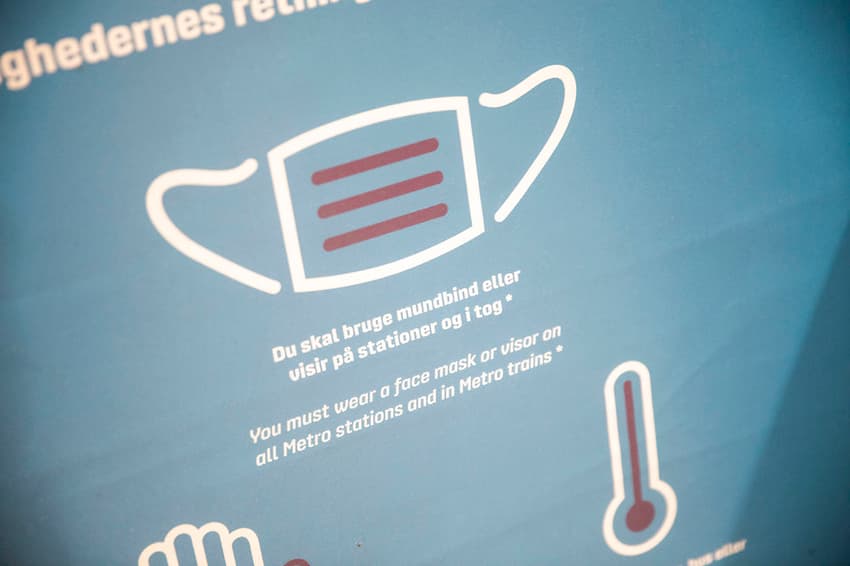Denmark’s new epidemic law comes into effect

A new epidemic law, recently passed by a broad majority in parliament, takes effect on Monday March 1st.
The new law replaces an emergency epidemic law passed in March 2020, which gave the government extended powers to intervene in society in order to fight the Covid-19 pandemic.
Parliament is granted more control under the new law, with the sitting health minister now required to ask the chamber for support for any changes in the law made to control an epidemic.
As such, restrictions of an “interventionist nature” will now require a parliamentary vote and cannot unilaterally be placed by the health minister.
A parliamentary committee will not, however, be able to prevent the government from lifting, easing or making “insignificant changes” to existing rules under the new law.
The law was passed last week after a previous proposal was scrapped due to resistance to a clause which would have enabled authorities to force vaccinations in a narrowly-specified set of circumstances.
The new law also provides for the government and health authorities to appoint an 11-member epidemic commission to offer consultation during future pandemics or epidemics.
Similarly to the outgoing law, the new one allows for examinations, tests, isolation and treatment to be required by force in certain situations in which this is deemed necessary to protect public health.
Mandatory use of face masks and public assembly restrictions are also provided for by the new law.
Coronavirus restrictions currently in place under the previous law are transferred and remain in place under the new law, the Ministry of Health confirmed in a statement on Monday.
It has been criticised for a number of elements, notably the extent to which provisions for infection tracing enable the government to conduct surveillance over the general public, news wire Ritzau reported last week after parliament voted the law through.
Contact tracing provided for by the law can give rise to monitoring of users of gyms and customers at restaurants, while members of the public can be required to hand over details of close contacts against their will, Ritzau wrote.
An amendment to the bill which would have put in place a thorough parliamentary review later in the year was eventually withdrawn after failing to gain the necessary votes. It will instead be given a softer evaluation.
READ ALSO: New Danish epidemic law could be reviewed by parliament in autumn
Comments
See Also
The new law replaces an emergency epidemic law passed in March 2020, which gave the government extended powers to intervene in society in order to fight the Covid-19 pandemic.
Parliament is granted more control under the new law, with the sitting health minister now required to ask the chamber for support for any changes in the law made to control an epidemic.
As such, restrictions of an “interventionist nature” will now require a parliamentary vote and cannot unilaterally be placed by the health minister.
A parliamentary committee will not, however, be able to prevent the government from lifting, easing or making “insignificant changes” to existing rules under the new law.
The law was passed last week after a previous proposal was scrapped due to resistance to a clause which would have enabled authorities to force vaccinations in a narrowly-specified set of circumstances.
The new law also provides for the government and health authorities to appoint an 11-member epidemic commission to offer consultation during future pandemics or epidemics.
Similarly to the outgoing law, the new one allows for examinations, tests, isolation and treatment to be required by force in certain situations in which this is deemed necessary to protect public health.
Mandatory use of face masks and public assembly restrictions are also provided for by the new law.
Coronavirus restrictions currently in place under the previous law are transferred and remain in place under the new law, the Ministry of Health confirmed in a statement on Monday.
It has been criticised for a number of elements, notably the extent to which provisions for infection tracing enable the government to conduct surveillance over the general public, news wire Ritzau reported last week after parliament voted the law through.
Contact tracing provided for by the law can give rise to monitoring of users of gyms and customers at restaurants, while members of the public can be required to hand over details of close contacts against their will, Ritzau wrote.
An amendment to the bill which would have put in place a thorough parliamentary review later in the year was eventually withdrawn after failing to gain the necessary votes. It will instead be given a softer evaluation.
READ ALSO: New Danish epidemic law could be reviewed by parliament in autumn
Join the conversation in our comments section below. Share your own views and experience and if you have a question or suggestion for our journalists then email us at [email protected].
Please keep comments civil, constructive and on topic – and make sure to read our terms of use before getting involved.
Please log in here to leave a comment.